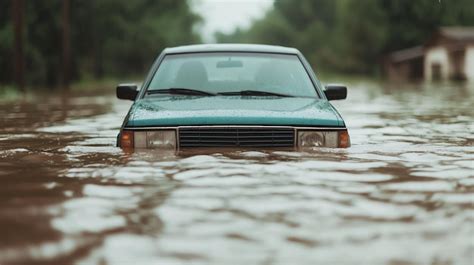
Holiday travel in Texas devolved into chaos as torrential rains triggered widespread flooding, leaving numerous vehicles stranded and prompting high-water rescues across the state. The severe weather, impacting travel plans for countless residents and visitors, underscores the potent threat posed by flash floods, especially during peak travel periods.
Several counties, particularly those in central and eastern Texas, bore the brunt of the deluge. Emergency services were stretched thin, responding to a surge in calls for assistance from motorists trapped in rising waters. As of late Sunday, no fatalities or serious injuries had been reported, according to official sources, but the situation remained fluid with further rainfall anticipated.
“Turn Around, Don’t Drown,” a familiar mantra during flood events, was reiterated by state and local officials. The National Weather Service (NWS) issued flood advisories and warnings, emphasizing the dangers of driving through flooded roadways, where water depth can be deceptive and rapidly changing.
The unexpected intensity of the storms caught many travelers off guard, turning what should have been festive journeys into perilous ordeals. The economic impact of the disruptions, including vehicle damage, travel delays, and potential business losses, is expected to be considerable.
Central and Eastern Texas Hit Hard
The worst of the flooding was concentrated in central and eastern Texas, where rainfall totals exceeded several inches in a short period. The rapid accumulation of water overwhelmed drainage systems, transforming roadways into treacherous waterways.
“We’ve seen a significant number of vehicles stranded due to the flash flooding,” stated a spokesperson for the Texas Department of Public Safety (DPS). The DPS, along with local law enforcement and fire departments, mobilized swift water rescue teams to assist stranded individuals.
In several instances, rescuers had to physically extract people from their vehicles, often using inflatable boats or high-water vehicles. Many of those rescued were visibly shaken but otherwise unharmed.
The exact number of vehicles stranded remains difficult to quantify, as incidents were widespread and ongoing. However, preliminary estimates suggest that hundreds of vehicles were affected.
Travel Disruptions and Road Closures
The flooding led to widespread travel disruptions, with numerous road closures reported across the affected regions. Major highways, including portions of Interstate 10 and Interstate 45, experienced significant delays and closures due to high water.
The Texas Department of Transportation (TxDOT) worked diligently to clear roadways and provide updated information to travelers, but progress was hampered by the continuing rainfall and the extent of the flooding. TxDOT’s website and social media channels became crucial sources of information for motorists seeking alternative routes.
Air travel was also affected, with delays and cancellations reported at several airports, including those in Houston and Austin. Passengers were advised to check with their airlines for the latest flight information.
The combined effect of road closures and air travel disruptions created a logistical nightmare for many travelers, forcing them to alter their plans or postpone their journeys altogether. The timing of the flooding, coinciding with the holiday travel season, exacerbated the impact, as many people were en route to visit family and friends.
Safety Warnings and Precautions
In response to the flooding, state and local officials issued urgent safety warnings, urging residents and travelers to exercise extreme caution. The “Turn Around, Don’t Drown” campaign was prominently featured in public service announcements.
The NWS emphasized that even a few inches of moving water can be enough to sweep a vehicle away. They advised motorists to avoid driving through flooded areas and to seek higher ground if they encounter rising water.
The DPS also cautioned against walking or playing in floodwaters, as they can be contaminated with sewage, chemicals, and debris. Additionally, floodwaters can conceal hidden dangers, such as downed power lines or submerged objects.
Homeowners were advised to take steps to protect their property from flooding, such as moving valuables to higher floors and clearing debris from gutters and drains. Sandbags were made available at several locations to help residents protect their homes from rising water.
Weather Forecast and Outlook
The NWS forecast called for continued rainfall in the affected regions, raising concerns about the potential for further flooding. The intensity and duration of the rainfall remained uncertain, but forecasters warned that even moderate rainfall could exacerbate the existing situation.
The ongoing rain increased the risk of flash flooding, particularly in areas that were already saturated. The NWS urged residents to stay informed about the latest weather conditions and to heed any warnings or advisories.
Longer-term forecasts suggested that the weather pattern responsible for the heavy rainfall would gradually shift, but the risk of flooding was expected to persist for several days.
Community Response and Relief Efforts
The flooding prompted a widespread community response, with residents and organizations coming together to assist those in need. Shelters were opened to provide temporary housing for displaced individuals, and volunteers distributed food, water, and other essential supplies.
Numerous charitable organizations launched fundraising efforts to support flood relief, and donations poured in from across the state and beyond. The American Red Cross, Salvation Army, and other relief organizations mobilized volunteers and resources to assist affected communities.
Local businesses also stepped up to provide assistance, offering discounts on lodging and meals to stranded travelers. Many residents opened their homes to those who were unable to reach their destinations.
The outpouring of support demonstrated the resilience and compassion of the Texas community in the face of adversity. The recovery process is expected to be lengthy and challenging, but the spirit of cooperation and generosity will undoubtedly play a vital role in helping communities rebuild.
Infrastructure Damage and Assessment
The full extent of the infrastructure damage caused by the flooding remains under assessment. Preliminary reports indicate that numerous roads, bridges, and culverts were damaged or destroyed.
The Texas Department of Transportation (TxDOT) dispatched engineers to inspect infrastructure and assess the damage. Road closures were expected to remain in place until repairs could be made.
The flooding also caused damage to utilities, including power lines and water pipes. Power outages were reported in several areas, and some residents experienced disruptions in their water service.
Utility companies worked to restore service as quickly as possible, but the extent of the damage and the continuing rainfall hampered their efforts. The cost of repairing the damaged infrastructure is expected to be substantial.
Long-Term Recovery and Mitigation
The flooding serves as a reminder of the vulnerability of Texas communities to extreme weather events. As the state continues to grow and develop, it is essential to invest in infrastructure and mitigation measures to reduce the risk of future flooding.
Improved drainage systems, flood control reservoirs, and stricter building codes are all important components of a comprehensive flood mitigation strategy. Additionally, public education campaigns can help raise awareness about the risks of flooding and promote preparedness.
The long-term recovery process will require a coordinated effort involving government agencies, private organizations, and individual residents. The lessons learned from this flooding event can help inform future planning and policy decisions.
The Texas legislature is likely to consider additional funding for flood control projects in the next legislative session. The need for improved infrastructure and mitigation measures is clear, and lawmakers will be under pressure to address the issue.
Impact on the Economy
The flooding is expected to have a significant impact on the Texas economy. The disruption to travel and commerce will result in lost revenue for businesses, and the cost of repairing damaged infrastructure will be substantial.
The agricultural sector is also likely to be affected, as crops and livestock have been damaged by the flooding. The economic impact will vary depending on the region and the extent of the damage.
The Texas economy is generally resilient, but the flooding will undoubtedly pose a challenge. The state’s economic recovery will depend on the speed and effectiveness of the relief and recovery efforts.
The tourism industry is expected to be particularly hard hit, as many travelers have canceled or postponed their trips. The long-term impact on tourism will depend on how quickly the affected areas can recover and restore their infrastructure.
Climate Change Considerations
While attributing any single weather event to climate change is complex, scientists agree that climate change is increasing the frequency and intensity of extreme weather events, including heavy rainfall and flooding.
As the atmosphere warms, it can hold more moisture, leading to more intense precipitation events. Climate models predict that Texas will experience more frequent and severe flooding in the future.
Addressing climate change is essential to mitigating the risk of future flooding. Reducing greenhouse gas emissions and investing in climate resilience measures are crucial steps.
The flooding in Texas underscores the need for a comprehensive approach to climate change that includes both mitigation and adaptation strategies. The state must take action to reduce its greenhouse gas emissions and prepare for the impacts of a changing climate.
Expert Commentary
“The flooding in Texas is a stark reminder of the power of nature and the importance of preparedness,” said Dr. John Nielsen-Gammon, the Texas State Climatologist. “While we cannot prevent all flooding, we can take steps to reduce the risk and mitigate the impact.”
“The key is to invest in infrastructure, improve drainage systems, and educate the public about the dangers of flooding,” Dr. Nielsen-Gammon added. “We also need to address climate change, which is exacerbating the problem.”
Other experts echoed Dr. Nielsen-Gammon’s sentiments, emphasizing the need for a multi-faceted approach to flood management. They also stressed the importance of community resilience and the need for individuals to take personal responsibility for their safety.
FAQ on Texas Holiday Travel Flooding
Q1: What areas of Texas were most affected by the holiday travel flooding?
A1: The most severely impacted areas were primarily in central and eastern Texas. Counties such as those surrounding Houston, Austin, and other areas within that corridor experienced the brunt of the torrential rains and subsequent flooding. Major highways like sections of Interstate 10 and Interstate 45 were significantly affected, leading to widespread travel disruptions. The source article mentions that the DPS and local authorities were stretched thin in these regions, responding to numerous calls for assistance.*
Q2: What is the current guidance for travelers planning to drive through Texas?
A2: The primary guidance remains “Turn Around, Don’t Drown.” The National Weather Service (NWS) has issued flood advisories and warnings, strongly advising against driving through flooded roadways. Water depth can be deceptive and rapidly changing, posing significant risks even for large vehicles. Travelers should monitor weather forecasts, check road conditions via TxDOT’s website and social media, and consider alternative routes or postponing travel if possible. Air travelers should confirm flight statuses with their airlines.*
Q3: Are there any reported fatalities or serious injuries related to the flooding?
A3: As of the latest reports late Sunday, no fatalities or serious injuries had been confirmed. However, the situation remains dynamic, and authorities continue to urge caution due to the ongoing rainfall and potential for further flooding. Emergency services are actively involved in high-water rescues, extracting people from stranded vehicles. The absence of reported fatalities at this stage doesn’t diminish the severity of the situation or the need for continued vigilance.*
Q4: What resources are available for those affected by the flooding?
A4: Numerous resources are available, including shelters providing temporary housing for displaced individuals. Charitable organizations like the American Red Cross and Salvation Army are distributing food, water, and essential supplies. Local businesses are offering discounts on lodging and meals, and many residents are opening their homes to those in need. The Texas Department of Transportation (TxDOT) provides updated road condition information, and the National Weather Service (NWS) offers weather forecasts and warnings. Furthermore, local emergency services can be contacted for immediate assistance.*
Q5: How can I help with the flood relief efforts?
A5: Several avenues exist for contributing to flood relief efforts. Donations can be made to reputable charitable organizations such as the American Red Cross and the Salvation Army. Volunteering time at local shelters or relief centers is another valuable way to help. Additionally, checking with local community organizations and government agencies for specific needs and opportunities to assist in the recovery process is recommended. Financial donations are often the most efficient way to support relief efforts, enabling organizations to purchase and distribute necessary resources.*









